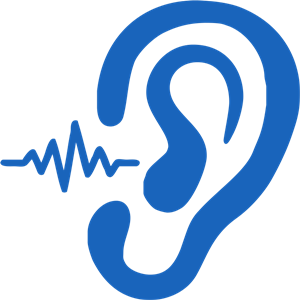The analysis included 33 studies involving about 19,000 people between the ages of 12 to 34. About 24% of young people listened to music too loudly from their phones or music players, while 48% attended noisy venues that could impact their hearing. In addition, the researchers concluded that the number of young people at risk of hearing loss from exposure to these unsafe listening practices ranges between 0.67 to 1.35 billion.
What Is Considered a Dangerous Noise Level?
Sound is measured in units called decibels (dB). The higher the decibel level, the louder the noise is.3 For example, normal conversations can range from 60 to 70 dB, whereas a motorcycle engine, sporting event, or concert can range from 95 to 110 dB.4
The National Institute on Deafness and Other Communication Disorders recommends keeping sounds at or below 70 dB. However, long or repeated exposure to sounds and noises at or above 85 dB could cause hearing loss.3 In addition, loud noise above 120 dB can cause immediate harm to your ears.4
Over the course of an eight-hour day, the average noise level should not be more than 85 dB, per the National Institute of Occupational Safety and Health (NIOSH). Additionally, sounds that are 100 dB should not be listened to for more than 15 minutes.
Why Are Younger People at Higher Risk of Hearing Loss?
Younger people are particularly vulnerable to hearing loss because of their frequent use of personal listening devices, such as smartphones, headphones, and speakers, according to Viral Tejani, AuD, PhD, an audiologist and assistant professor at Case Western Reserve University School of Medicine.
Adolescents and young adults are also more likely to visit entertainment venues, nightclubs, concerts, movies, and sporting events. Engaging in these activities places them at risk of developing hearing loss early in life.
“What can occur as a result of attending these events is a temporary threshold shift,” Tejani told Verywell in an email. “There is a temporary decline in hearing that recovers. However, this recovery isn’t really a true recovery.”
Tejani explained that sounds are funneled to the sensory cells—also called hair cells—in the hearing system. These hair cells are responsible for sending to our brain through complex pathways. However, “our hair cells are not always going to be resilient—repeated noise exposure will eventually compromise our hair cell function and lead to diminished hearing ability,” he said.
Loud noise exposure can also cause tinnitus—a ringing, humming, crackling, or roaring in the ears. It can occur along with hearing loss.5
What Can You Do to Prevent Hearing Loss?
You can still enjoy listening to music while protecting your hearing, experts say. Here are some recommendations:
Keep the volume of devices down (a rough estimate is below 60% of the maximum volume).
Try noise-canceling headphones to reduce background noise, so there is less of a need to increase the volume of the device to overcome the background noise.
Use disposable earplugs in loud music venues, concerts, or sporting events, and position yourself further away from the speakers.
Limit the amount of time you spend doing noisy activities. For example, listen to music from your device for less time per day and take breaks away from loud sounds when at an entertainment venue.
Monitor your listening levels through built-in safe listening features on your phones or consider sound level meter apps that can quickly measure sound levels in your environment.
Pay attention to warning signs of hearing loss, including ringing or buzzing in your ears and difficulties hearing high-pitched sounds or following conversations.
If you’re concerned about hearing loss or want to know ways to reduce your risk of hearing loss, have a conversation with your healthcare provider.
